In August 1980, while much work still remained to prepare Space Shuttle Columbia for its first flight to usher in a new era of a reusable crewed space transportation system, NASA managers confirmed March 1981 as the target launch date for STS-1. Significant recent accomplishments included the reinstallation of the main engines on Columbia after their recertification, continued installation of heat shield tiles on the vehicle’s surfaces, and tests of the orbiter as well as of the solid rocket boosters. The prime crew for the first Shuttle flight, John W. Young and Robert L. Crippen along with their backups Joe H. Engle and Richard H. Truly, continued to train for the mission and participated in some phases of the test activities such as a crew interface test and a full mission duration simulation.
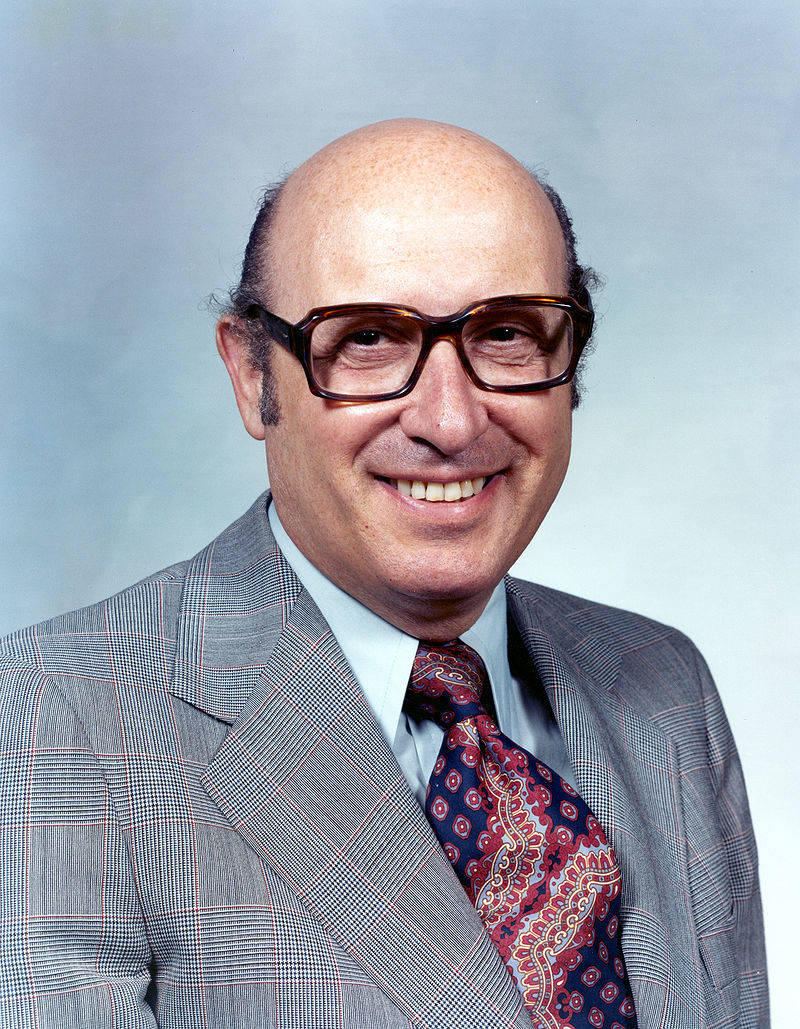
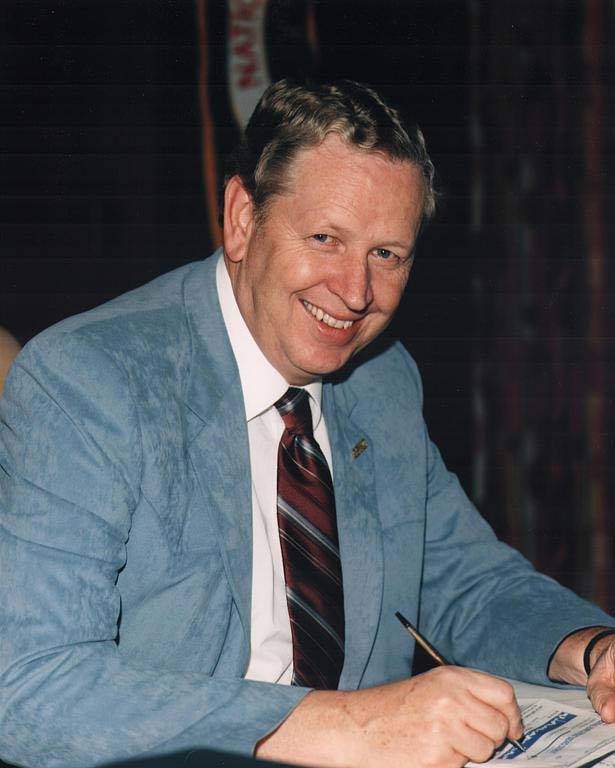
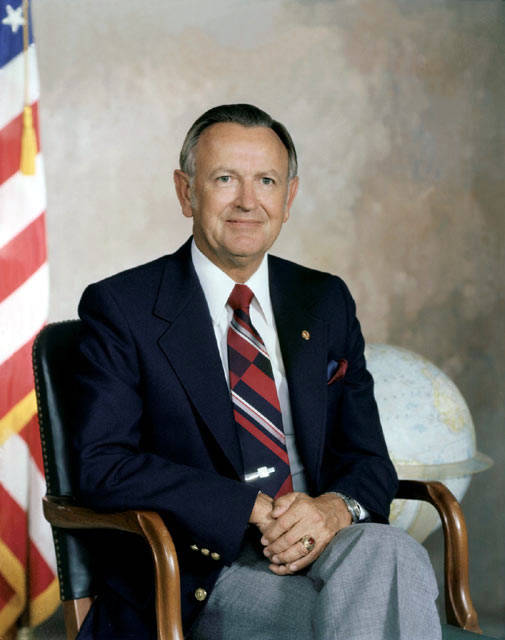
Left: NASA Administrator Frosch. Middle: KSC Director Smith. Right: JSC Director Kraft.
On Aug. 5, 1980, NASA Administrator Robert A. Frosch confirmed the agency’s confidence in working to launch Columbia on the STS-1 mission in March 1981. The decision came after a thorough management review of the Shuttle program held at the Kennedy Space Center (KSC) in late July. Although the management team decided to strengthen an additional 4,500 thermal protection tiles on the vehicle, there was enough time to complete that work prior to rolling Columbia from the Orbiter Processing Facility (OPF) to the Vehicle Assembly Building (VAB) in November. “Our exhaustive program review led us to the conclusion that we can set a difficult but achievable schedule leading to a first launch in March,” said Frosch. Of the decision, KSC Director Richard G. Smith said, “I acknowledge that this work schedule is difficult, but I believe achievable. However, it will take the same dedication and team spirit that landed Americans on the Moon.” Johnson Space Center (JSC) Director Christopher C. Kraft acknowledged that work on a first vehicle is always challenging but “if we set the schedule in that tight mode we have the best chance of making the earliest date. I believe it’s the right approach.”
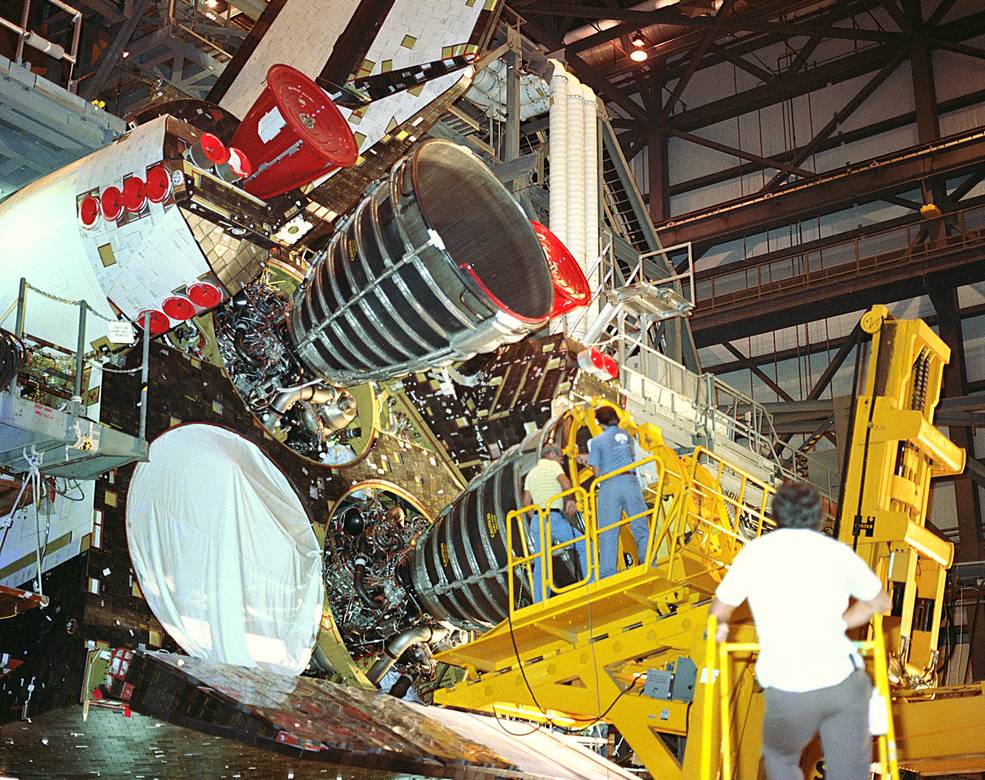
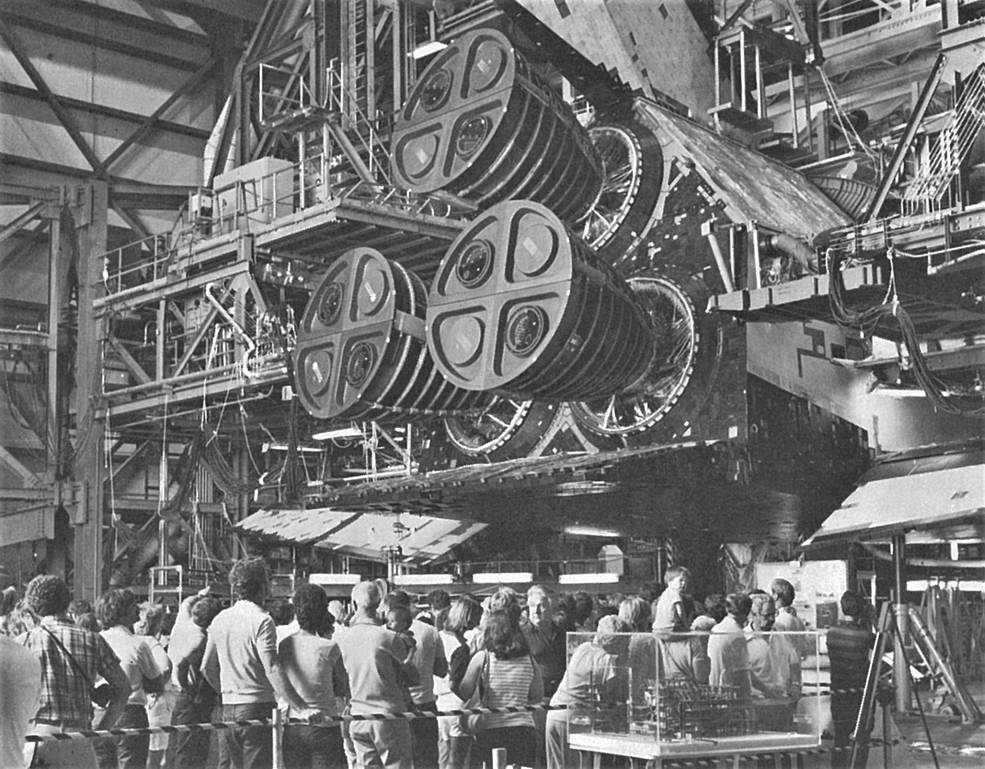
Left: Engineers re-installing the main engines on Columbia in KSC’s OPF. Right: Employees and their families view Columbia’s main engines during KSC’s Open House.
Engineers in the OPF achieved a significant milestone when they reinstalled the three Space Shuttle Main Engines (SSMEs) on Columbia, two on July 19 and the third on July 26, following their recertification at the National Space Transportation Laboratory (NSTL), now the Stennis Space Center in Bay St. Louis, Mississippi. Employees and their families had a chance to view the engines installed on Columbia as the rear doors of the OPF were opened during KSC’s Open House on Labor Day 1980. The next time the engines were ignited was during the 20-second Flight Readiness Firing at the launch pad about one month before launch. In a separate engine test on July 30, engineers shut down the firing 105 seconds into the planned 530-second burn due to a burn-through in a hydrogen preburner. Engineers successfully repeated the test with a different engine configured like the one that failed.
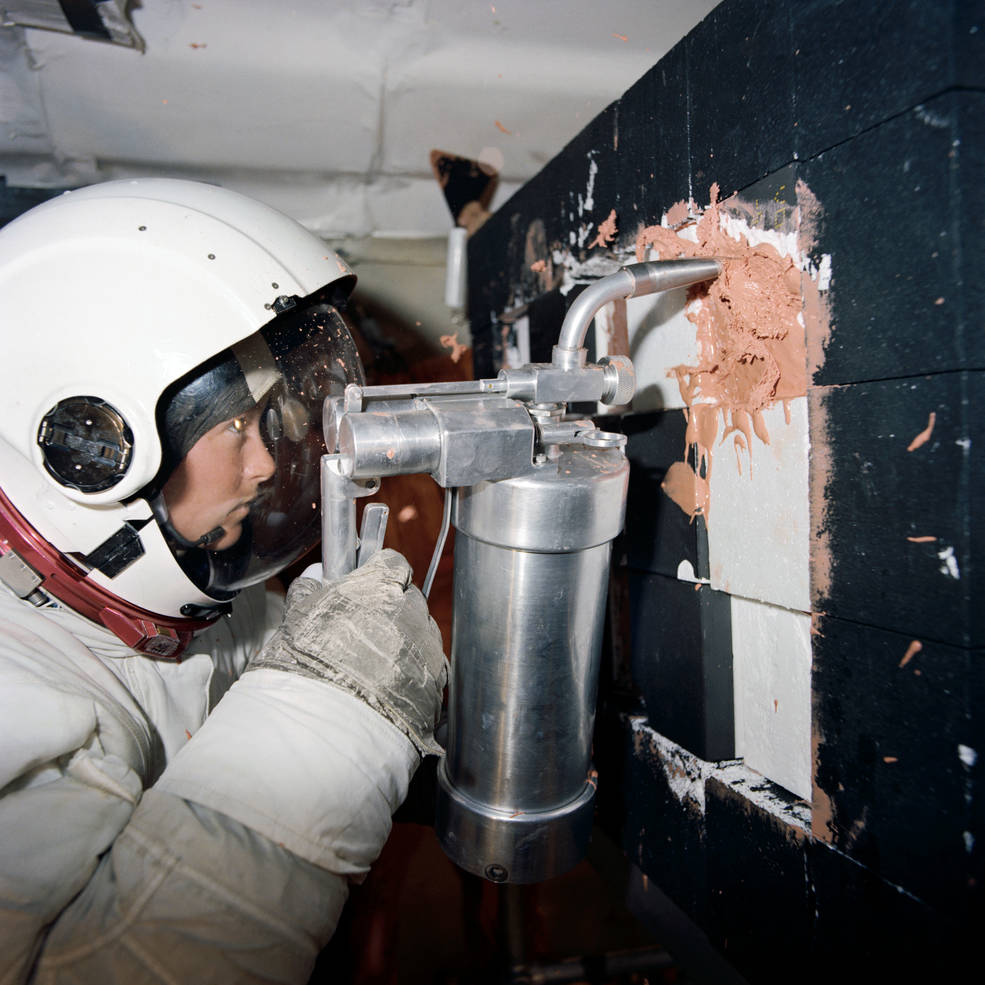
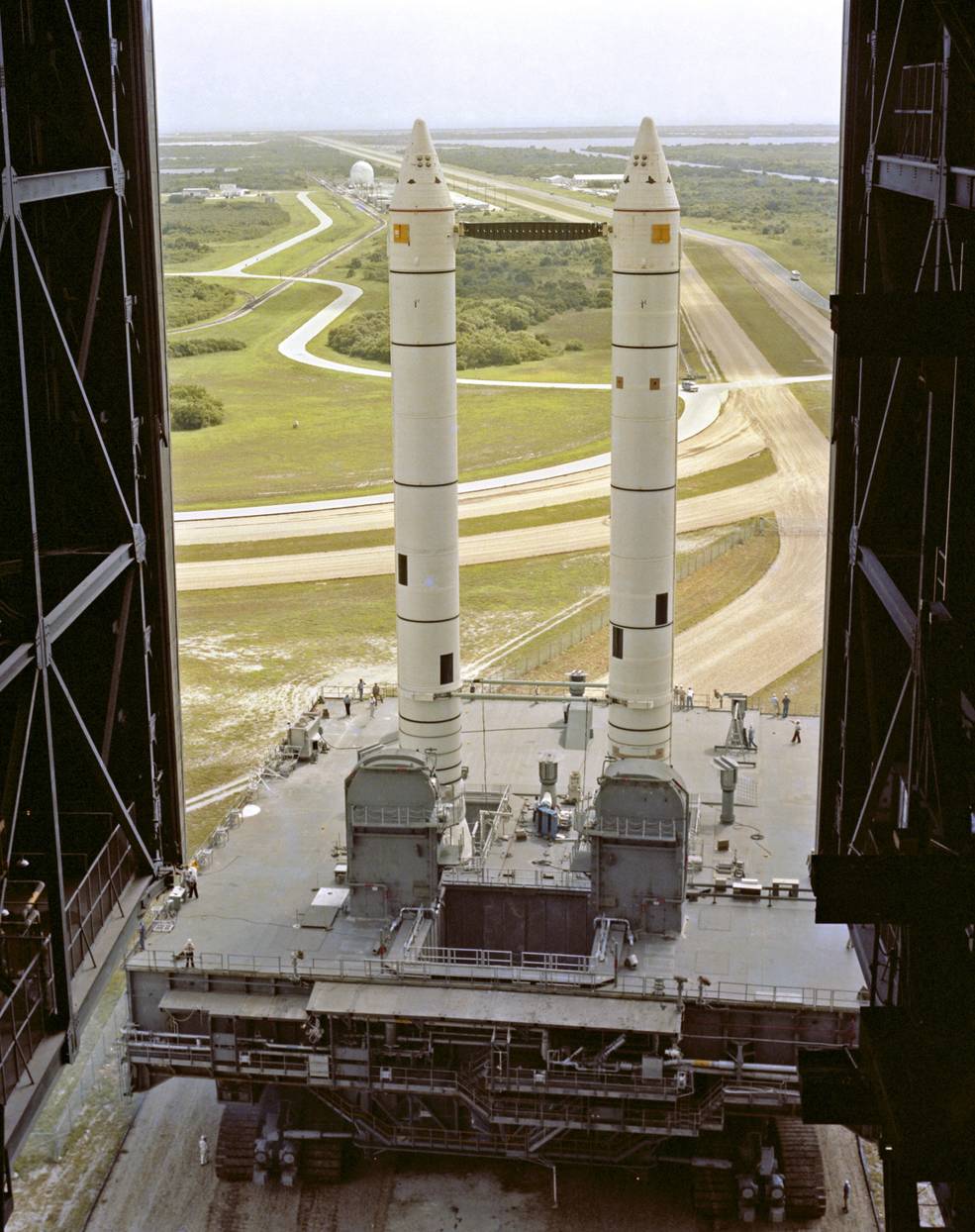
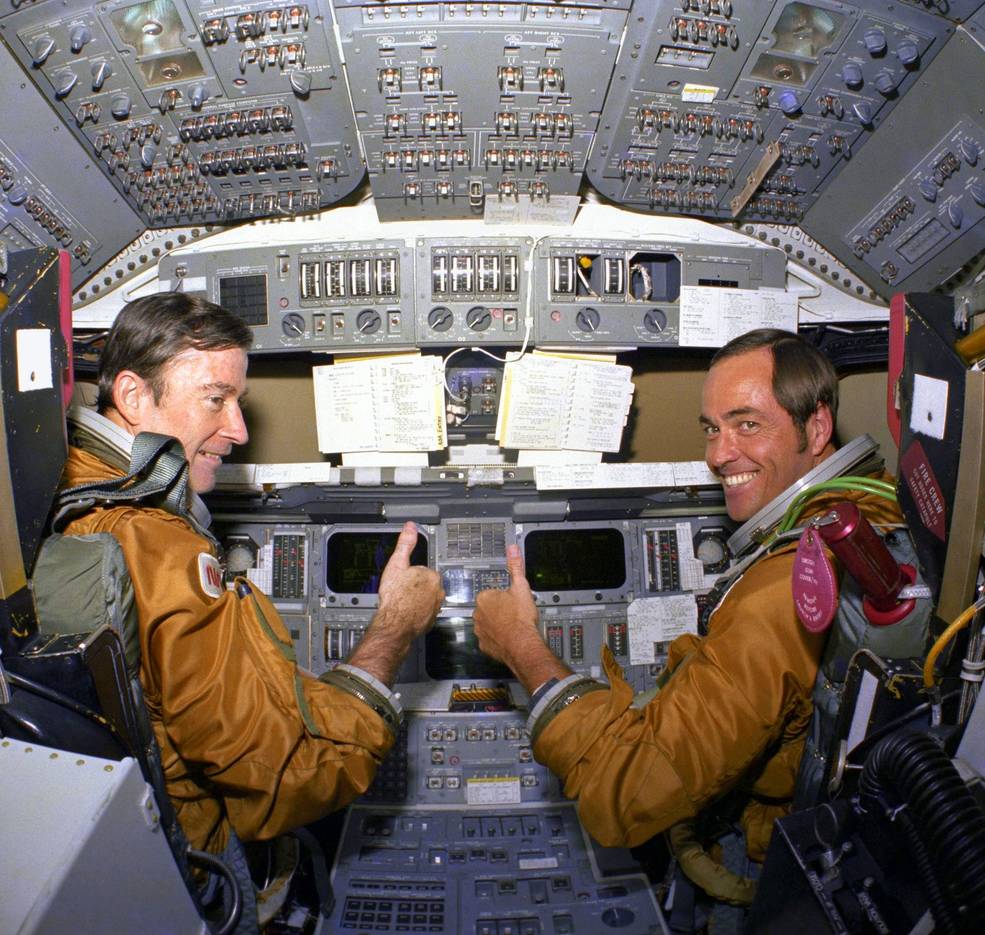
Left: Astronaut Fisher testing tile repair methods aboard the KC-135 aircraft. Middle: The twin SRBs for Columbia’s first flight briefly rolled out of the VAB. Right: STS-1 crewmembers Young, left, and Crippen in Columbia’s cockpit.
Technicians in the OPF continued installing thermal protection system (TPS) tiles on Columbia’s external surfaces at the rate of 600 to 700 tiles per week, including the addition of 4,500 tiles strengthened to better withstand the stresses of flight. Reflecting concerns that tiles might be damaged during flight, in January 1980 NASA awarded Martin Marietta Aerospace’s Denver Division a contract to develop an inflight tile repair kit. Wearing a pressure suit, in July 1980 astronaut Anna L. Fisher tested the repair method in simulated weightlessness during parabolic flights aboard NASA’s KC-135 aircraft. Other work to prepare Columbia for its first space flight included a test to determine how much the twin Solid Rocket Boosters (SRBs) might flex when the External Tank (ET) between them is loaded with supercold propellants. The results of the test indicated that the amount of flexing would be less than predicted by mathematical models. As part of that test conducted in late August, workers rolled the Mobile Launch Platform with the stacked SRBs out of the VAB for a short distance. In a series of dynamic stability tests conducted in the OPF between Aug. 18 and Sept. 2, engineers validated design changes and software upgrades to ensure the orbiter’s lateral stability during certain portions of its entry profile. On Sept. 9, prime and backup crews participated in the third and final Crew Equipment Interface Test to verify all tasks and procedures used during the actual mission. On Sept. 23 and 24, Mission Control at JSC completed a full mission duration 56-hour simulation from launch to landing, with backup crewmembers Engle and Truly participating in the fixed based simulator at JSC for the first two days then in the motion based simulator for the entry portion. Mission Control monitored all activities, including anomalies that required the astronauts’ immediate responses.
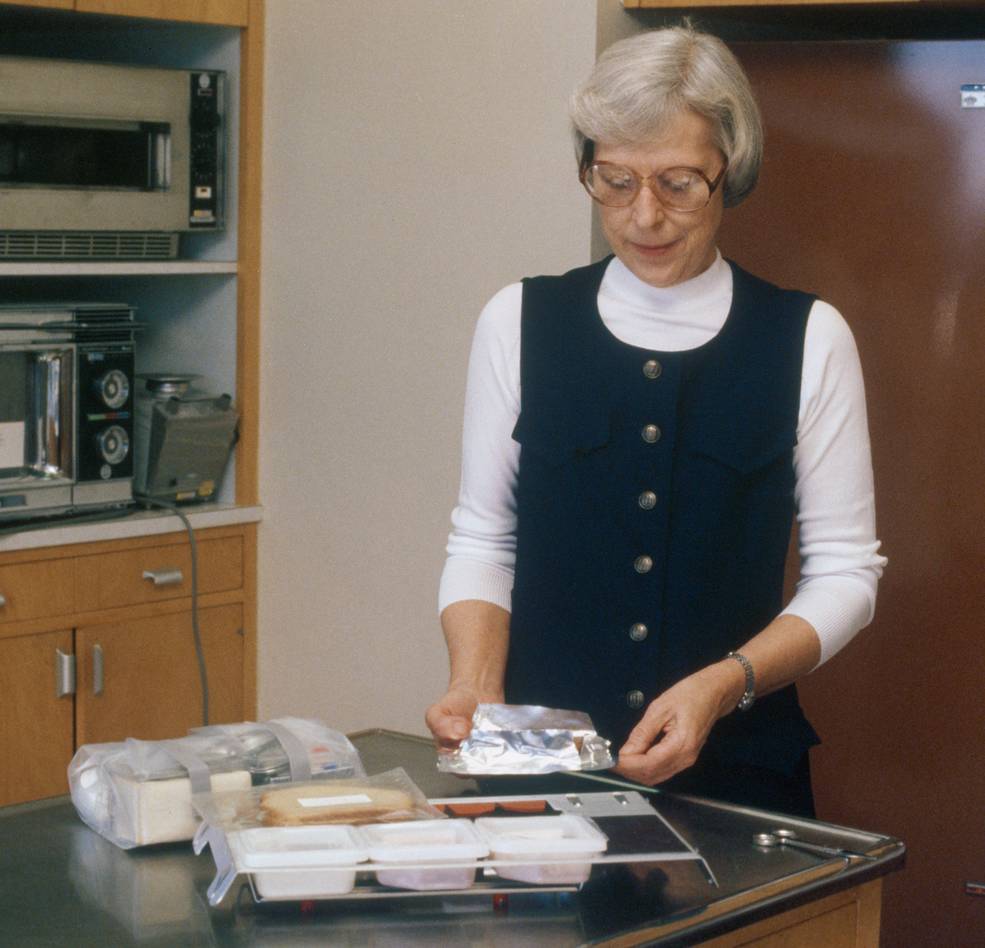
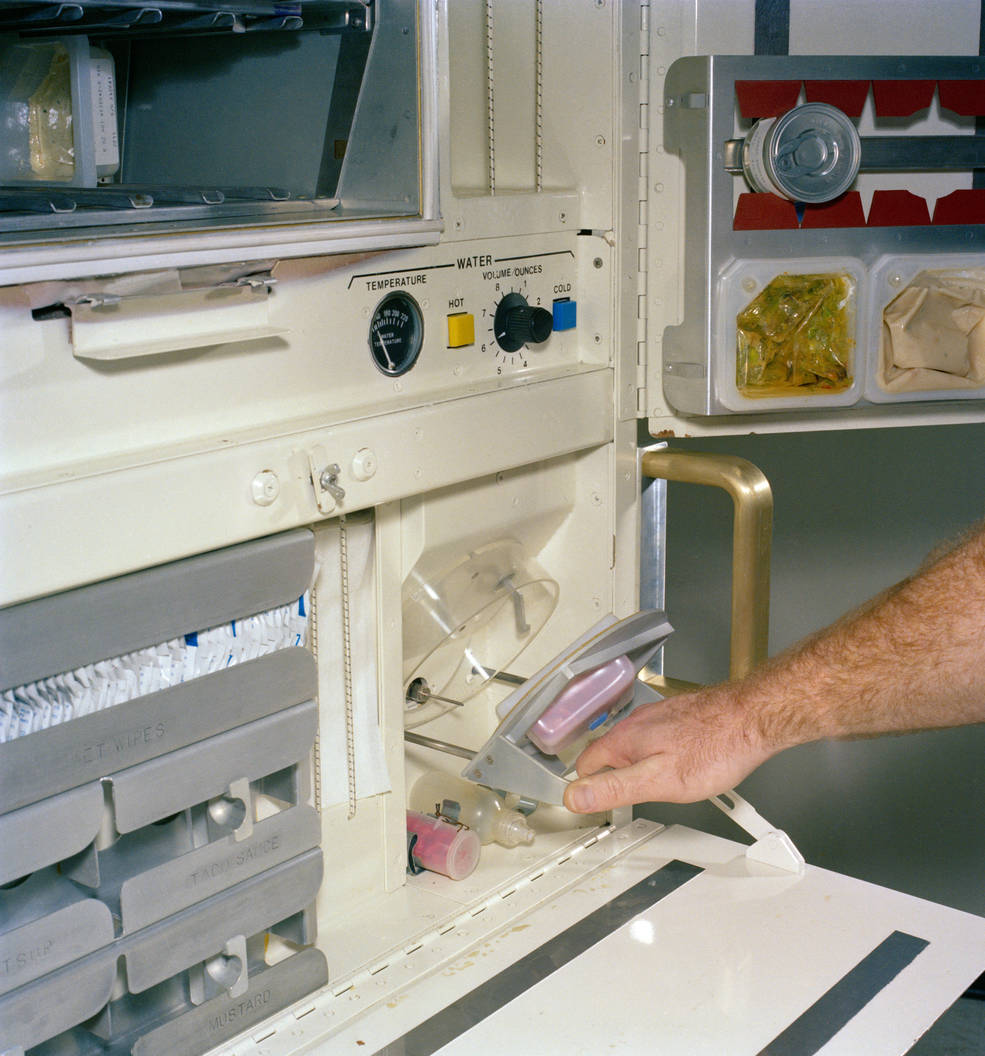
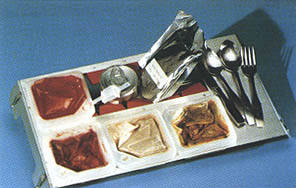
Left: JSC food scientist Rapp demonstrates the packaging of food for the Space Shuttle. Middle: A JSC Food Lab technician demonstrates the operation of the Space Shuttle galley. Right: A sample Space Shuttle food tray.
With the advent of the Space Shuttle, the availability of a galley to both rehydrate and reheat foods made the astronauts’ menus more palatable and varied than in earlier programs. The lack of refrigeration on the other hand required most food items to be dehydrated or thermostabilized (heat sterilized), apart from a small locker of fresh food intended for immediate consumption. Meal trays to hold individual food containers provided crewmembers with an eating surface and an environment in which they could consume multiple items in parallel using normal utensils. Food scientists Rita M. Rapp and Charles T. Bourland of the JSC Food Laboratory developed the early Space Shuttle menus that included a large variety of food items, condiments, and beverages tailored to individual crewmembers’ tastes.
To be continued…
Significant world events in August 1980:
August 3 – XXII Summer Olympic Games close in Moscow
August 4 – John Lennon and Yoko Ono begin recording album “Double Fantasy,” Lennon’s last
August 14 – Democratic National Convention in New York nominates Jimmy Carter and Walter Mondale
August 14 – 17,000 workers go on strike in Gdansk, Poland, beginning Solidarity Movement
August 20 – Reinhold Messner of Italy is first to solo ascend Mt. Everest
August 21 – Linda Ronstadt opens in Pirates of Penzance on Broadway


























